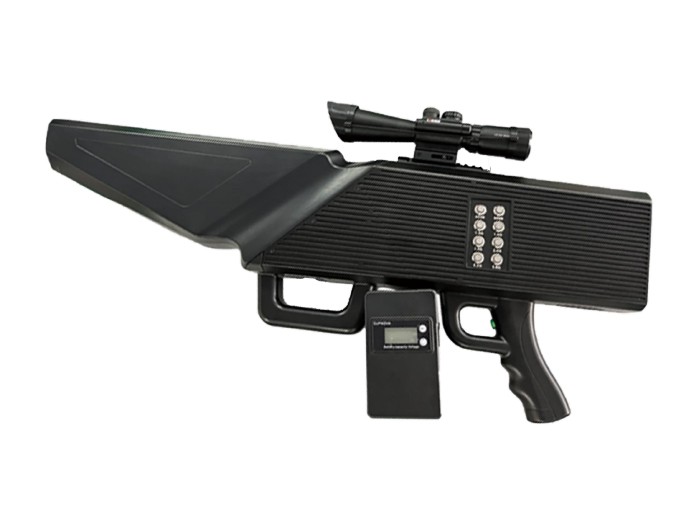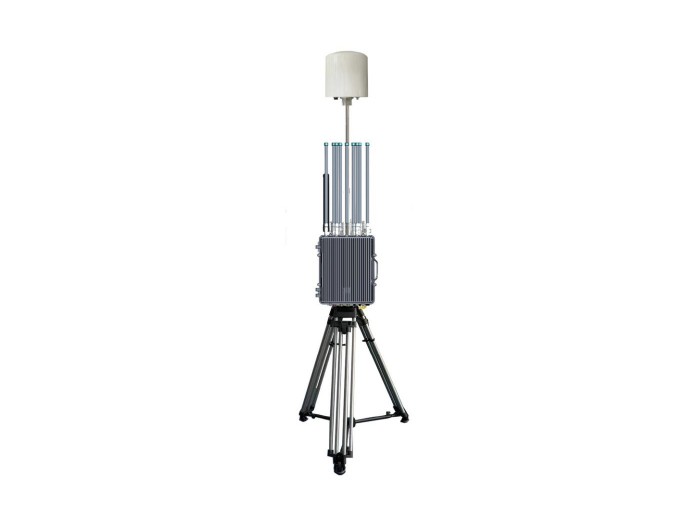Military Grade Drone RF Jammer Guns: A Comprehensive Guide
As the prevalence of drones continues to rise, so do the potential security threats they pose. Picture a scenario where unauthorized drones infiltrate your organization's airspace, jeopardizing privacy, security, or delivering contraband goods. With increasing incidents reported worldwide, the need for effective counter-drone measures is paramount. Military-grade drone RF jammer guns are one of the most effective solutions available today. These devices not only disrupt drone operations but also ensure authorized personnel can maintain control over their environments. In this guide, we will explore the essentials of RF jammer guns, their applications, and how they work to protect sensitive areas from drone-related threats.
Understanding Drone RF Jammer Guns
Drone RF jammer guns, typically classified as military-grade equipment, are designed to disable the communication between a drone and its operator by emitting radio frequency signals. These devices work by overwhelming the drone's communication channels, effectively 'jamming' its signals. In doing so, the drone loses its control signals, causing it to either hover in place or return to its point of origin. The key component in these jammer guns is their ability to target specific frequencies that drones commonly use, primarily within the 2.4GHz and 5.8GHz bands.
According to a recent industry report by Drone Industry Insights, the global market for counter-drone technology, including RF jammers, is projected to reach $1.8 billion by 2026. This growing industry trend emphasizes the urgent need for effective protective measures against unauthorized drone intrusion. When considering their size, power, and technological complexity, military-grade RF jammers differ significantly from consumer-grade models, often showcasing a higher range and reliability for extensive operational needs.
The Benefits of Military-Grade Jammer Guns
There are numerous benefits to utilizing military-grade drone RF jammer guns. First and foremost is enhanced security. These devices provide a critical line of defense against various malicious activities associated with drones, such as espionage, unauthorized surveillance, or even potential terrorist attacks.
Secondly, RF jammer guns offer versatility in their application. They can be used in various settings, including military installations, airports, correctional facilities, and public events, ensuring that sensitive information and areas remain secure. For instance, airports face significant risk from drones, which can disrupt normal airport operations and pose safety hazards to aircraft. The deployment of effective RF jammers can help mitigate these risks.
Finally, using military-grade jammers helps maintain privacy. Organizations such as government institutions and corporations that deal with sensitive information require drone protection to prevent data breaches. Users can also configure these devices for specific use cases, allowing them to customize their level of jamming based on the threat level and environment.
Applications of Drone RF Jammer Guns
The applications of military-grade RF jammer guns are vast and varied across industries. In the military sector, these tools are critical for safeguarding operations against reconnaissance drones. For example, during covert missions or in hostile territories, armed forces can deploy RF jammers to prevent enemy drones from collecting intelligence or directing strikes onto military personnel.
Moreover, airports are another prominent area for the application of drone jammer systems. A notable example is the 2018 Gatwick Airport incident, where flights were grounded for days due to drone sightings. The implementation of RF jammers can prevent similar occurrences by detecting and neutralizing unauthorized drones. Airports are investing in counter-drone systems, which include RF jamming technology, as part of their security protocols.
Additionally, public events, such as concerts or sporting events, often attract drone operators looking to create unauthorized footage. The use of RF jammers can assist law enforcement in providing secure environments for spectators while preventing privacy invasions. A growing number of jurisdictions are recognizing the need for regulatory measures surrounding the use of RF jammers, ensuring that they are deployed responsibly and legally.
Steps for Choosing the Right RF Jammer Gun
Selecting a military-grade drone RF jammer gun requires careful consideration of various factors to ensure you meet your specific operational needs. Follow these steps:
- Evaluate Your Needs: Assess the specific security threat landscape relevant to your area or organization. Are you primarily concerned about unauthorized surveillance, potential attacks, or data breaches?
- Consider the Range: Determine the required operational range of the RF jammer. Short-range jammers are suitable for small areas, while long-range options are necessary for larger expanses.
- Frequency Support: Ensure the jammer gun supports the frequency bands commonly used by drones (primarily 2.4GHz and 5.8GHz) to maximize effectiveness.
- Legal Compliance: Before acquiring an RF jammer, check the legal regulations in your jurisdiction. Unauthorized use of jamming devices can lead to significant legal repercussions.
- Consult Experts: Contact professionals who specialize in counter-drone solutions. They can provide valuable insights and assist you in selecting the right equipment.

Key Recommendations and Takeaways
- Understand your specific security needs to determine the appropriate type of RF jammer for your situation.
- Do thorough research to choose a model that complies with local laws and regulations governing the use of jamming technology.
- Consider potential benefits beyond security, such as operational efficiency and compliance with regulatory frameworks.
- Stay informed about emerging trends in counter-drone technology to ensure your security measures remain relevant and effective.
- Contact our experts for further consultation and tailored recommendations on our selection of military-grade drone RF jammer guns.
Conclusion
In an increasingly drone-populated world, the demand for effective security measures has never been greater. Military-grade drone RF jammer guns offer a viable solution to various organizations seeking to protect their assets and sensitive environments. By understanding the benefits, applications, and selection criteria for these devices, you can significantly enhance your operational security.
If you are interested in fortifying your security posture, visit our website now or contact us for a free consultation. Our experts are ready to assist you in choosing the right drone RF jammer that meets your needs.

















